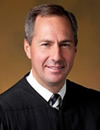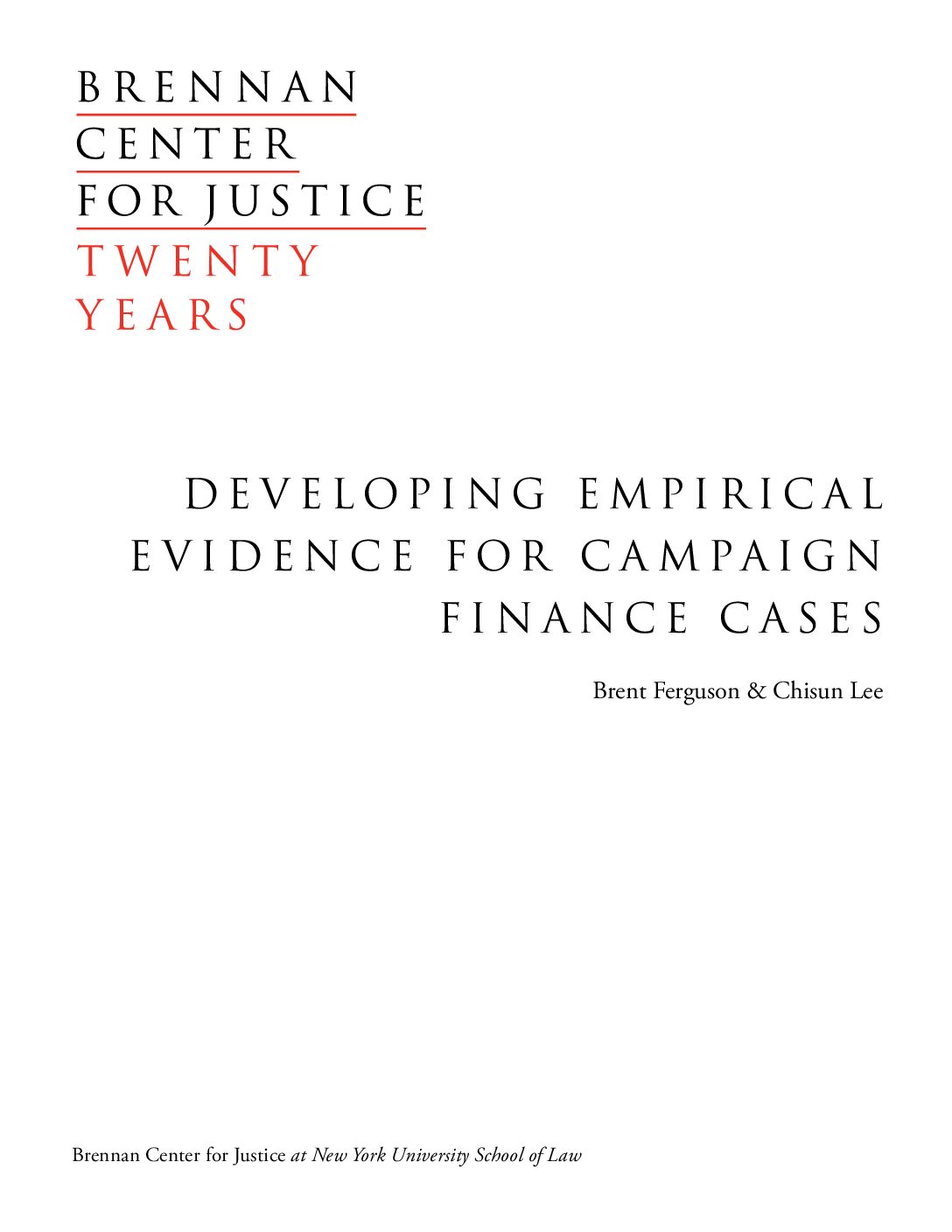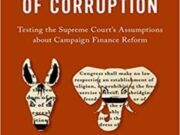Hon. Thomas Hardiman
United States Court of Appeals for the Third Circuit (2007-Present); United States District Court for the Western District of Pennsylvania (2003-2007)
This post explores two additional cases involving Judge Hardiman of the Third Circuit. (For our first post analyzing Judge Hardiman’s record on free speech, click here.) Judge Hardiman joined an opinion in one case, later affirmed by the U.S. Supreme Court, that a federal law providing criminal penalties for a person who “creates, sells, or possesses a depiction of animal cruelty” for “commercial gain” was unconstitutional. In the other case, he dissented in a ruling that a city airport policy barring non-commercial advertising sales violated the First Amendment.
- U.S. v. Stevens, 533 F.3d 218 (3rd Cir. 2008)
- NAACP v. City of Philadelphia, 834 F. 3d 435 (3rd Cir. 2016)
Robert Stevens sold videotapes depicting animal cruelty “crush videos” in violation of 18 U.S.C. § 48. What the videos depict is illegal. The Third Circuit weighed whether Congress could impose criminal penalties for creating, selling, or possessing these videos for commercial gain or whether such a law violated the First Amendment.
The court was rightly skeptical of creating any new categories of unprotected speech to join child pornography, fighting words, threats, imminent incitement to illegal activity, and obscenity.
As no bright line analogies existed, the government argued the videos were like child pornography. The court analyzed the videos under a four-part test devised in the child pornography case, New York v. Ferber, 458 U.S. 747 (1982). Under these factors, the government could not winnow a new category of unprotected speech or produce a compelling interest that was “least restrictive.” The Supreme Court affirmed. U.S. v. Stevens, 130 S. Ct. 1577 (2010).
From the Third Circuit opinion:
First Ferber Factor:
The compelling government interest inquiry at issue here overlaps with the strict scrutiny analysis discussed presently. No matter how appealing the cause of animal protection is to our sensibilities, we hesitate – in the First Amendment context – to elevate it to the status of a compelling interest.
Three reasons give us pause to conclude that “preventing cruelty to animals” rises to a compelling government interest that trumps an individual’s free speech rights. First, the Supreme Court has suggested that the kind of government interest at issue in § 48 is not compelling…
Second, while the Supreme Court has not always been crystal clear as to what constitutes a compelling interest in free speech cases, it rarely finds such an interest for content-based restrictions. When it has done so, the interest has – without exception – related to the well-being of human beings, not animals.
Similarly, and even more fatal to the Government’s position, because the statute does not regulate the underlying act of animal cruelty – which must be a crime under state or federal law in order to trigger § 48 – we can see no persuasive argument that such a statute serves a compelling government interest…
Third, there is not a sufficient link between § 48 and the interest in “preventing cruelty to animals.” As the Government recognizes, Congress and the states already have in place comprehensive statutory schemes to protect animals from mistreatment. The Government states that “all fifty states have enacted laws which criminalize the infliction of cruelty on animals. This includes laws which outlaw dog fighting in all 50 states.” These statutes are materially different from § 48. Section 48 does nothing to regulate the underlying conduct that is already illegal under state laws. Rather, it regulates only the depiction of the conduct.
Second Ferber factor:
The second factor in the Ferber rationale, that child pornography is “intrinsically related to the sexual abuse of children,” is a similarly weak position for the Government to rely upon in this case. In Ferber, the Court reasoned that child pornography should be banned, in part, because the pornographic material continues to harm the children involved even after the abuse has taken place. While animals are sentient creatures worthy of human kindness and human care, one cannot seriously contend that the animals themselves suffer continuing harm by having their images out in the marketplace.
Third Ferber factor:
Both the second and third Ferber factors assert that the distribution network for child pornography must be closed so that the production of child pornography will decrease. This drying-up-the-market theory, based on decreasing production, is potentially apt in the animal cruelty context. However, there is no empirical evidence in the record to confirm that the theory is valid in this circumstance.
Indeed, the fact that most dog fights are conducted at live venues and produce significant gambling revenue suggests that the production of tapes such as those at issue in this case does not serve as the primary economic motive for the underlying animal cruelty the Government purports to target. Moreover, standing alone this factor sweeps so broadly it should not be deployed to justify extracting an entire category of speech from First Amendment protections. Restriction of the depiction of almost any activity can work to dry up, or at least restrain, the activity’s market.
Fourth Ferber factor:
The fourth Ferber factor is that the value of the prohibited speech is “exceedingly modest, if not de minimis.” . . . [H]ow broad these categories [of low value speech] actually are is subject to debate because most of the legislative history focuses on the depiction of animal cruelty for prurient purposes in so-called crush videos.
Having ruled animal cruelty was not a separate category of unprotected speech, the court held it could not survive heightened scrutiny as a content-based ban:
The problem lies in defining the compelling government interest when Congress does not have the constitutional power to regulate an area that has traditionally been governed by state statutes. When federalism concerns arise, the “least restrictive means” analysis necessarily informs the “compelling government interest” analysis. The stated governmental interest in 18 U.S.C. § 48 is to “prevent cruelty to animals.” Taking federalism concerns into account, the interest stated in this manner is too broad. Absent demonstration of the requisite impact on commerce which is absent on this record, Congress does not have the constitutional authority to pass the types of animal cruelty statutes that are seen in the fifty states and the District of Columbia.
[W]e do not see how a sound argument can be made that the Free Speech Clause is outweighed by a statute whose primary purpose is to aid in the enforcement of an already comprehensive state and federal anti-animal-cruelty regime. Conversely, if we agree with the Government that the compelling government interest is “preventing cruelty to animals,” then we do not see how a sound argument can be made that § 48 is narrowly tailored and uses the least restrictive means.
The NAACP wanted visitors to Philadelphia, along with other cities, to know of its new criminal justice initiative. The publicity blitz included buying advertising space on monitors at the airport decrying domestic incarceration to population ratios.
The controversy-averse airport management declined and belatedly wrote a policy banning most non-commercial advertisements. The NAACP sued on First Amendment grounds.
The majority found the airport’s non-commercial-advertising ban was unreasonable, even in a limited public forum. It placed the burden on the government and found its proffered justifications of revenue maximization and controversy avoidance insufficient. The City’s inconsistent and ad hoc explanations for the Policy troubled the majority throughout the opinion.
From the majority opinion:
The only possibility . . . was that non-commercial ads might be more likely than commercial ones to offend travelers. This is the theory the City advances on appeal. [Airport manager] Tyrrell testified that this “may” have something to do with the adoption of the ban. However, he said that he did not recall if this idea had “ever been discussed in any meeting or conversation” that he had. And he admitted it was something he just thought of as he sat for his deposition.
The core question for us is whether the City’s ban on non-commercial content is reasonable. At the heart of this is the tension between its justifications on the one hand and the record that we have before us on the other. Typically, when the government exercises its police powers, the scrutiny we apply is rational-basis review. Under this standard, a “legislative choice is not subject to courtroom fact-finding and may be based on rational speculation unsupported by evidence or empirical data.”
By contrast, when a law or regulation burdens a fundamental right such as the First Amendment, rational basis yields to more exacting review. Indeed, it has been the Supreme Court’s “consistent position that democracy stands on a stronger footing when courts protect First Amendment interests against legislative intrusion, rather than deferring to merely rational legislative judgments in this area.” Thus, unlike with rational-basis review, when “the Government restricts speech, [it] bears the burden of proving the constitutionality of its actions.”
Neither the Supreme Court nor our Court has expressly decided the allocation of the burden to establish reasonableness in a limited public or nonpublic forum.
[T]he City has a two-step burden that it can satisfy using record evidence or commonsense inferences. First, given that reasonableness “must be assessed in the light of the purpose of the forum and all the surrounding circumstances,” the evidence or commonsense inferences must allow us to grasp the purpose to which the City has devoted the forum. And second, the evidence or commonsense inferences also must provide a way of tying the limitation on speech to the forum’s purpose. The City need not prove that the banned speech would cause harm if permitted, but . . . it must provide a legitimate explanation for the restriction.
The City has argued that its objectives for the advertising space are revenue maximization and controversy avoidance and that the ban furthers them. Both justifications suffer from a lack of record evidence. And even with the benefit of commonsense inferences, neither passes muster.
Although we have no reason to doubt that the City does try to maintain a “soothing and pleasing” environment in the Airport, that broader effort apparently does not involve shielding travelers from non-commercial content on the ground that it might offend them. Instead, the Airport exposes them to an onslaught of non-commercial content outside of its advertising space without any suggestion that doing so is inconsistent with the environment it seeks to foster.
The City relies heavily on previous cases in which courts have examined commercial/non-commercial distinctions. This reliance is misplaced. Reasonableness is a case-specific inquiry, meaning that previous examples are of limited usefulness. And, under our facts, the City’s ban is unreasonable.
Judge Hardiman dissented. He argued the government’s ban was a “reasonable attempt to avoid controversy,” that the airport official’s halting and sometimes contradictory discovery answers were satisfactory, and that the ban was viewpoint neutral.
From the dissent:
The Constitution does not require the “Government freely to grant access to all who wish to exercise their right to free speech on every type of Government property without regard to the nature of the property or to the disruption that might be caused by the speaker’s activities.….” To balance “the Government’s interest in limiting the use of its property to its intended purpose” and “the interest of those wishing to use the property for other purposes,” courts engage in forum analysis.
Here, as the District Court found, one of the purposes of the advertising space is to “maintain[] the Airport as a family-friendly” or comfortable environment.
Our initial task then, is to determine whether the Policy’s ban on noncommercial advertisements is a reasonable or commonsense way to promote a congenial atmosphere through the use of the City’s more than 100 Airport monitors. I believe it is.
As [the government official] explained, noncommercial advertisements are more likely to be controversial or offensive than commercial offers. Noncommercial messages often seek to convey an opinion or advocate a position – goals motived by a desire to confront people on issues about which they disagree, sometimes very emotionally.
It would seem obvious that these images would be controversial and inappropriate for travelers heading to their gates. While these examples were (before today) hypothetical, this may no longer be the case. And many courts that have considered similar dilemmas have found prohibitions on public transit like the one here reasonable attempts to keep the peace.
By banning noncommercial advertisements on the monitors there will be less controversy in the Airport than there would be if the Policy were never enacted. While other forums scattered throughout the Airport might display controversial noncommercial messages, it still seems reasonable to think that disallowing controversial advertisements on the Airport’s more than 100 monitors will have a positive impact on travelers’ experiences by removing some stress or controversy from their journeys.
The NAACP counters that the Policy is unreasonable because it simultaneously forbids the noncommercial speech of private parties and permits noncommercial speech by the City. This argument could carry the day but for the government speech doctrine. Although the First Amendment prevents the City from circumscribing private speech however it wishes, those restrictions do not apply when the City itself speaks and the City may control the content it wishes to display on its monitors.
In addition to be being reasonable, Hardiman claimed the ban was viewpoint neutral:
According to the NAACP, the City intended to discriminate against views that run contrary to the City’s viewpoint when it enacted the Policy and this illicit motive requires the Policy’s invalidation. This argument is foreclosed by the NAACP’s facial challenge. Since the Policy excludes private speakers who agree with the City as well as those who disagree, it is facially neutral and our inquiry in that regard is complete.
To the NAACP, motive is relevant because “the line between viewpoints and subjects is such an elusive one” and “classifying a particular viewpoint as a subject rather than as a viewpoint on a subject” can be a tactic to impermissibly exclude unwanted viewpoints from a particular forum. While this reasoning could support an argument that “noncommercial speech” is actually a viewpoint rather than a subject matter which may be banned, the NAACP neither makes this argument nor would it be supported by caselaw.
I would find the Policy’s exception for government noncommercial speech permissible. I say this with some hesitation, however, because both Pleasant Grove City v. Summum, 555 U.S. 460 (2009) and Walker v. Texas Div., Sons of Confederate Veterans, Inc., 135 S. Ct. 2239 (2015) focused on whether all the speech in a given venue constituted private speech or government speech. Unlike those cases, here the City’s speech occurs in a venue shared by the government and private speakers alike. This difference raises a number of unique concerns not directly at issue in Summum and Walker.
Finally, he addressed imprimatur:
In addition, with the power to express noncommercial positions and exclude those to the contrary, the City could create an environment in which passersby are led to believe that the City’s positions are uncontested. It may appear that the opportunity to contest the government’s message exists by posting an opposing advertisement on the wall monitors, but that no one has done so. This illusion of consensus, which uniquely threatens the marketplace of ideas, is similar to the concern Justice Alito warned of in his dissent in Walker.
In response to that concern, the Court has instructed that when the government speaks, “it is not barred by the Free Speech Clause from determining the content of what it says” and “the First Amendment strictures that attend the various types of government-established forums do not apply.” Based on that directive, I must conclude that the Policy does not implicate viewpoint discrimination concerns that would plainly exist if private speech were at issue.














